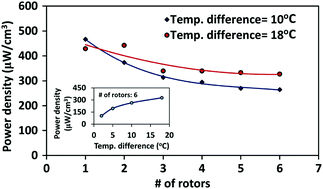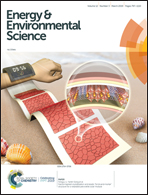Energy scavenging from ultra-low temperature gradients†
Abstract
Thermal energy harvesting from natural resources and waste heat is becoming critical due to ever-increasing environmental concerns. However, so far, available thermal energy harvesting technologies have only been able to generate electricity from large temperature gradients. Here, we report a fundamental breakthrough in low-grade thermal energy harvesting and demonstrate a device based on the thermomagnetic effect that uses ambient conditions as the heat sink and operates from a heat source at temperatures as low as 24 °C. This concept can convert temperature gradients as low as 2 °C into electricity while operating near room temperature. The device is found to exhibit a power density (power per unit volume of active material) of 105 μW cm−3 at a temperature difference of 2 °C, which increases to 465 μW cm−3 at a temperature difference of 10 °C. The power density increases by 2.5 times in the presence of wind with a speed of 2.0 m s−1. This advancement in thermal energy harvesting technology will have a transformative effect on renewable energy generation and in reducing global warming.



 Please wait while we load your content...
Please wait while we load your content...
